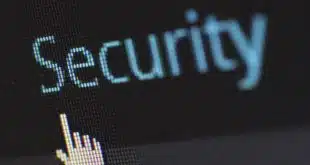Stimulus-check fraud is on the rise, says Advanced Fraud Solutions, a High Point, N.C.-based provider of fraud-mitigation tools. Of 1 million checks screened by AFS, 41,000 have been identified as fraudulent, the company says. Legitimate checks were issued by the U.S. Department of the Treasury starting in March as part of the CARES Act. Through mid-June, Treasury had issued nearly 160 million checks.
The trend detected by AFS reflects a shift in criminals’ focus when it comes to perpetrating fraud. In a public-service announcement, the Federal Bureau of Investigation warned that criminals are likely to begin looking for ways to fraudulently exploit government stimulus checks.
One way for criminals to commit stimulus-check fraud is through mobile-banking apps, which allow for checks to be deposited using remote deposit capture technology. RDC technology enables a financial institution’s customers to electronically deposit checks using a mobile device that captures an image of the check and transmits it to the customer’s bank for deposit. Since the outbreak of the Covid-19 pandemic, mobile banking usage is up 50% from the same period a year earlier, the FBI says.

A criminal who has stolen or purchased a consumer’s personal account information, including PINs and other personally identifiable information, can create a fraudulent stimulus check that he can then deposit into the hijacked account via mobile banking. Next, the criminal uses a fraudulently created debit card to withdraw funds against the deposit at an ATM before the check clears. Many banks allow consumers to withdraw a portion of their deposits while they are clearing.
What’s opening the door to this fraud is that some financial institutions are raising the threshold on how much a consumer can immediately withdraw against a newly deposited check as a way to reduce the friction around consumers’ accessing their money during the pandemic.
Indeed, “some banks have raised or altogether removed limits on what percentage of a newly deposited check is available for immediate withdrawal,” says Ted Kirk, vice president of strategic partnerships for AFS. “Remote deposit capture through mobile banking makes it easy for criminals to deposit fraudulent checks.”
Compounding the problem is that some financial institutions will even publish daily withdrawal limits and or funds availability for new deposits on their Web sites. “With access to that information, criminals know exactly what amounts they can deposit and withdraw without raising a red flag,” Kirk says.
As a defense, Kirk recommends financial institutions improve their access to fraud-screening data bases. AFS, for example, has data from more than 2,000 financial institutions on checks that have been returned because they are fraudulent or for other reasons. That information is used to help financial institutions flag suspect checks at deposit.
Kirk also recommends financial institutions have uniform rules for fraud screening and funds availability for new deposits across all consumer channels, including mobile, ATMs and interactive teller machines.
“Criminals gravitate to where the money is, and there is a lot of stimulus money going to consumers,” says Kirk. “Even if a criminal only hits 10% to 20% of the time on a stimulus check scam, he comes out ahead.”





